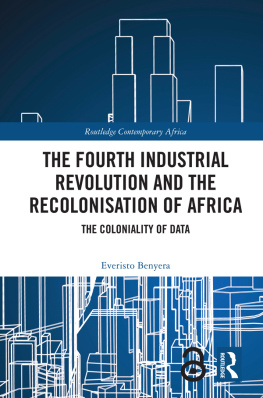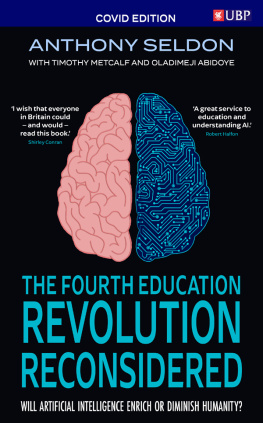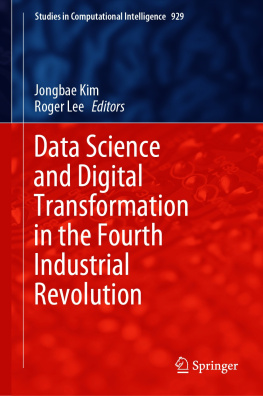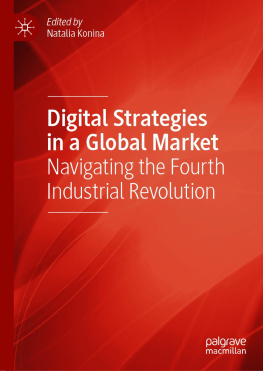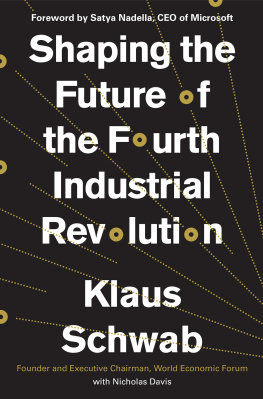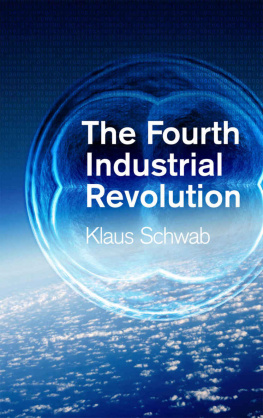The Workplace of the Future
The Fourth Industrial Revolution is a global development that shows no signs of slowing down. In his book, The Workplace of the Future: The Fourth Industrial Revolution, the Precariat and the Death of Hierarchies, Jon-Arild Johannessen sets a chilling vision of how robots and artificial intelligence will completely disrupt and transform working life.
The author contests that once the dust has settled from the Fourth Industrial Revolution, workplaces and professions will be unrecognizable and we will see the rise of a new social class: the precariat. We will live side by side with the working poor people who have several jobs, but still cant make ends meet. There will be a small salaried elite consisting of innovation and knowledge workers. Slightly further into the future, there will be a major transformation in professional environments. Johannessen also presents a typology for the precariat, the uncertain work that is created and develops a framework for the working poor, as well as for future innovation and knowledge workers, and sets out a new structure for the social hierarchy.
A fascinating and thought-provoking insight into the impact of the Fourth Industrial Revolution, The Workplace of the Future will be of interest to professionals and academics alike. The book is particularly suited to academic courses in management, economy, political science and social sciences.
Jon-Arild Johannessen is a full professor in Leadership at Nord University, Norway, and Kristiania University College, Norway.
Routledge Studies in the Economics of Innovation
The Routledge Studies in the Economics of Innovation series is our home for comprehensive yet accessible texts on the current thinking in the field. These cutting-edge, upper-level scholarly studies and edited collections bring together robust theories from a wide range of individual disciplines and provide in-depth studies of existing and emerging approaches to innovation, and the implications of such for the global economy.
Automation, Innovation and Economic Crisis
Surviving the Fourth Industrial Revolution
Jon-Arild Johannessen
The Economic Philosophy of the Internet of Things
James Juniper
The Workplace of the Future
The Fourth Industrial Revolution, the Precariat and the Death of Hierarchies
Jon-Arild Johannessen
For more information about this series, please visit: www.routledge.com/Routledge-Studies-in-the-Economics-of-Innovation/book-series/ECONINN
First published 2019
by Routledge
2 Park Square, Milton Park, Abingdon, Oxon OX14 4RN
and by Routledge
711 Third Avenue, New York, NY 10017
Routledge is an imprint of the Taylor & Francis Group, an informa business
2019 Jon-Arild Johannessen
The right of Jon-Arild Johannessen to be identified as author of this work has been asserted by him in accordance with sections 77 and 78 of the Copyright, Designs and Patents Act 1988.
All rights reserved. No part of this book may be reprinted or reproduced or utilised in any form or by any electronic, mechanical, or other means, now known or hereafter invented, including photocopying and recording, or in any information storage or retrieval system, without permission in writing from the publishers.
Trademark notice: Product or corporate names may be trademarks or registered trademarks, and are used only for identification and explanation without intent to infringe.
British Library Cataloguing-in-Publication Data
A catalogue record for this book is available from the British Library
Library of Congress Cataloging-in-Publication Data
A catalog record has been requested for this book
ISBN: 978-1-138-33920-0 (hbk)
ISBN: 978-0-429-44121-9 (ebk)
This book is about how robots and artificial intelligence will completely transform working life. Once the dust has settled from the Fourth Industrial Revolution, workplaces and professions will be unrecognizable. A new class is seeing the light of day: the precariat. We will live side by side with the working poor people who have several jobs, but still cant make ends meet. There will be a small salaried lite consisting of innovation and knowledge workers. Workplaces will be unrecognizable. Robots will have destroyed bureaucratic hierarchies and torn apart the middle classes. What will remain will be contract workers with insecure jobs. We are seeing the emergence of a new class of pyjama-workers people who can do their jobs in bed or alternatively at a caf table. Slightly further into the future, we can see a major transformation in professional environments. Doctors will be medical engineers, nurses will be nursing assistants accompanied by robots. Teachers will be replaced by robots and holograms. And taking this scenario further, we see the downfall of the great dinosaurs. Metaphorically speaking, major hospitals may in these robotized times metaphorically be seen as burger-van hospitals, where robots diagnose, prescribe and make surgical interventions. If decision-makers stick their heads in the sand like ostriches, the sandstorm will bury the ostriches so that they never get their tiny heads out of the sand.
Our challenges and problems are not linked to finding solutions to the consequences of robots and artificial intelligence. What is difficult is to discard our engrained ways of understanding the concepts of work, casual labour, being at ones workplace, and everything that is linked to the ways in which the industrial society organizes and manages work. Those woodchips you got from the oak you sawed down: cant you glue them back together to resurrect the old tree? The point of this metaphor is that what is gone is still present in our collective memory, and that is what is difficult to change.
Although the industrial society caused the middle classes to grow and live in greater comfort, there is much to suggest that the Fourth Industrial Revolution will decimate the middle classes.
This chapter is intended as a roadmap to explain what lies ahead for businesses and institutions, given the development of robots, informats and artificial intelligence.
We know that most jobs will change extremely rapidly. Until now, people who are educated have been able to find jobs. In the future, many people will not find jobs even though they are educated (Kessler, 2017). It seems likely that most jobs will be those either at the bottom or the top of the wage scale.
Robots, are destroying bureaucracies and hierarchies. This hypothesis is based on the research of Abd (2017), Wilson (2017), Ross (2016), and Susskind and Susskind (2015).
The second hypothesis on which this chapter is based is as follows: robots and informatization are transferring surpluses from income from employment to investment income. A good deal of empirical research supports this hypothesis.
The hypothesis reveals a paradox: productivity increases, the level of innovation increases, but at the same time average salary levels decline (McAffee & Brynjolfsson, 2017).
In the USA, it is projected that 50 per cent of todays workplaces will be automated and robotized over the next 20 years (Avent, 2016: 14). Robotization will take place in all occupations: journalism, teaching, medicine, defence, architecture, dentistry, the service sector, transport, the merchant navy, marketing, industry, etc. (McAffee & Brynjolfsson, 2017). The last major period of automation affected jobs in industry, during which a combination of industrial robots and global wage competition decimated millions of industrial jobs and transferred many jobs from high-cost countries to low-cost countries. It appears that the next round of automation will affect jobs in the service sector. According to two Oxford professors who conducted a major study of more than 700 different service-sector occupations, half of all jobs in the American service sector are in danger of disappearing (Frey & Osborne, 2013). Although robotization is transforming most workplaces, it is also leading to fewer work-related injuries, fewer traffic accidents, better medical diagnostics, and higher quality medical and surgical interventions. Robotization will improve the everyday




